
Mitu, thank you for joining us! You have been a fixture in the kiteboarding community since before many of our readers even knew kiting existed! What was the kiteboarding world like when you first started the sport in 1999?
When I started kiting, most people really didn't know that it was a sport! The first time I saw a kite here in Sal, I wondered to myself: Will it be fun? A friend of mine had a book of theory and a kite. Of course, I refused to read the book, so he read it, and I was flying instead! It was fun. At that time, safety systems were far from what we have nowadays. I learned with a two-line kite with no depower and a directional board with three straps. When the four-line kites arrived, there were no YouTube tutorials to explain how to relaunch from the water. I swam for miles and miles before learning how to do it properly. That was just how it was. No videos, no manuals... Just you, your kite, and your imagination.
Where were you, and what were you doing before you were introduced to kiting?
My relationship with the sea started in early childhood. I escaped home every day while my mother was at work to go to the beach. There, I used to build sailing boats with trash, wood, or whatever I found lying around. I had always been enchanted by the boats sailing in the sea. I wondered how they could turn, cut up into the wind, and carry weight. That was the beginning of my story with the ocean. From the boat models I built as a child, I continued by creating my own equipment to learn how to bodyboard, then surf, and finally to windsurf.
I started windsurfing when I was only 12, but it became my profession when I was 16. I would practise using old gear that the windsurf clubs were throwing out. One day, the owner of a school that was always watching me decided to support me by making me a sail. At that time, I was too skinny to be able to use a normal sail. This man taught me how to windsurf properly, and I will always be grateful to him for the chance he gave me. (RIP Jorge Foya)
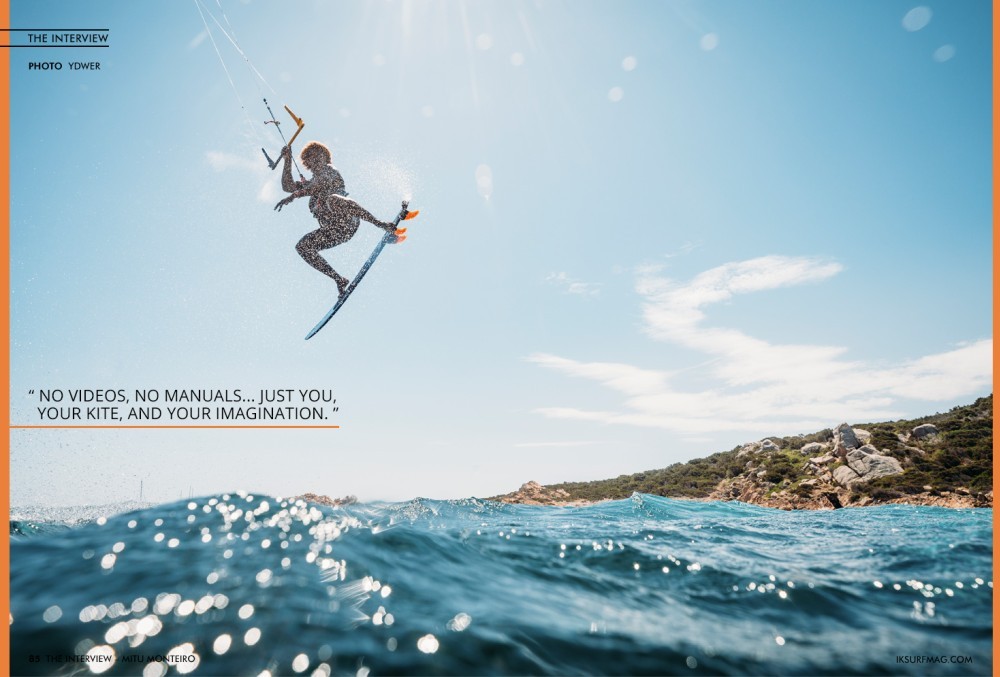
Did you know immediately that kitesurfing would be a major part of your life, or did it take some time to see the potential in the sport?
Actually, no. I learned to kitesurf just because I was curious. I wanted to know everything that had anything to do with the sea. In the beginning, I found kitesurfing way too easy. I went back to windsurfing because it was more challenging to me and was my way of earning money. After a few years, I was tired of spending all the money I had earned to buy windsurfing gear, only to break it in the waves. That is the main thing that led me back to kitesurfing.
You have been a leader and innovator in the wave and strapless freestyle community, basically since you started riding! What motivated you to push your progression and experiment with what was possible on a strapless kiteboard?
I don't know if I was the inventor of strapless freestyle, but I know the first person I'd seen doing something similar was Mark Shinn with a skimboard. At that time, I was already using my surfboard to kite as I had no other boards. Being a surfer, I loved being able to get to the waves faster.
For me, discovering strapless freestyle was an accident. I was riding a spot here called Ponta Sino. Going out, I took a small wave and did some kind of jump. I liked how it felt, so I did another jump to understand how it worked. I studied the way I had to put the board into the wind, and how it would stick to my feet. It was interesting, and a new challenge, let's say. I was always searching for new feelings and testing limits in the sport so I was never bored.
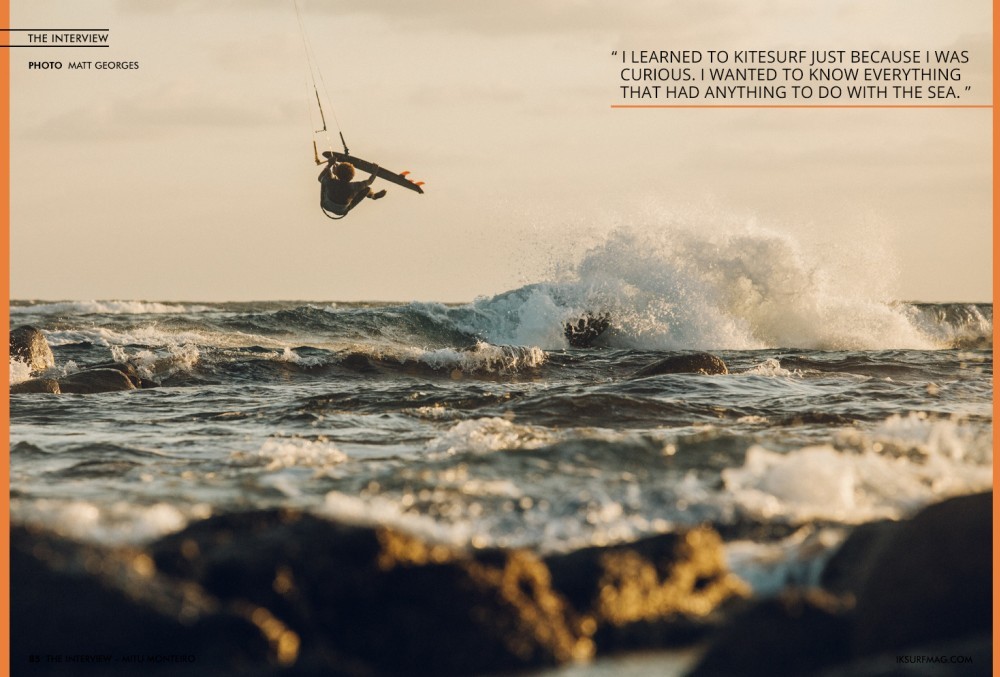
What have been the highlights of your kitesurfing career so far?
The most relevant one is my Wave Master title in 2008. It was the first time I had participated in an entire world tour, and it was the first world title for my country. It is a big joy that I have shared with all of my people. Here, we don't have many things to do. Many of the boys end up on the wrong paths of alcohol and drugs. I can remember kids like Matchu Lopes saying, "One day, I wanna be a world champion like Mitu." It was an immense joy for me to hear that, to give them a dream, and an objective to work towards.
What else stands out in my career... I must say that riding Teahupoo was a dream come true for me. I remember the night before my first session there, I couldn't sleep at all dreaming about how it would be. I could hear the sounds of the wave hitting the reef and my heart was racing.
Another success I will remember as a highlight for my career as a kitesurfer is the Red Bull Cape Verde crossing. One year of preparation followed by one month of riding solo among the islands of Cape Verde in difficult conditions. It was something I had dreamed of achieving, but I would never repeat it! It was amazing and exhausting at the same time. It was emotionally and physically the greatest test of my life. The first leg of the journey was about 240km kiting non-stop, never changing feet on my board. I got to Santo Antao where nobody had seen a kite on the beach before. People could not believe I had arrived by kite. They were looking at me like I was crazy! I cried seeing people waiting for me for hours in Boavista. I struggled to get to the shore once the wind dropped completely near Maio. I felt isolated and alone out in the middle of the sea. I was dreaming of home on the last stretch. But I did it, and it is one of my best accomplishments ever.
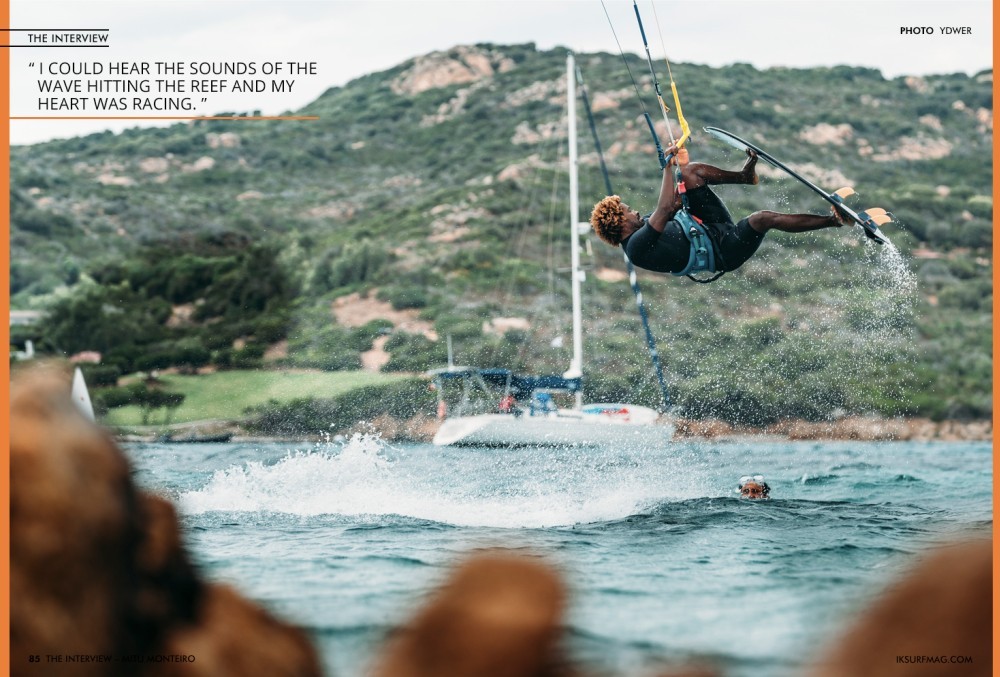
You stepped back from the competition scene in recent years but recently returned. What happened?
Well, the real reason I stopped for a couple of years was a lack of motivation. After the death of the KSP, a proper wave tour in which I had put so much effort, we ended up with no world tour, or just one or two events to crown a world champion. Most of the time, those events were run in a freestyle spot or in poor conditions that just weren't worth it.
I already had a family, we were buying a home, and there were a lot of responsibilities and costs that competing in the tour could not pay for. So for a few years, I decided to leave the scene. The GKA has been the main reason I decided to return. When I saw that it was a proper tour and well organised, giving wave and strapless freestyle the right importance, I went back to training. It took me a whole year of physical preparation. At 34, your body is not the same as when you are 18!
Do you have any advice for kiters that are working on their wave progression? How do they get past the fear of taking a fall in bigger waves?
As I tell all of my clients and students: Step by step. We can't go from the flat water straight to One Eye or Ponta Preta. We have to pass through small and medium-sized waves first. There, we have the chance to learn timing and gain confidence with our gear, which are fundamentals.
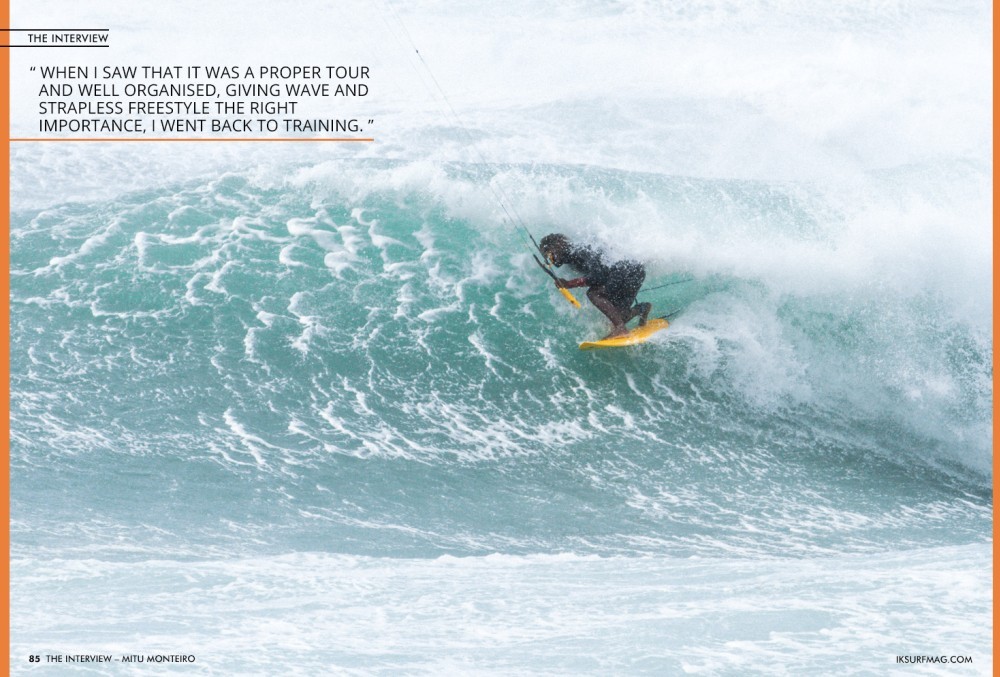
Another crucial point is to know your limit and never panic. Many people let themselves be influenced by friends to go out in spots that are out of their reach, have a bad experience, and leave thinking it's not for them. If you don't skip steps, you can do anything.
Before entering a new spot, it is a good habit to talk to local riders, ask them about the conditions, seabed, weather, etc. Then, once in, never take the first wave of a set. Take your time to get to know the spot properly. Once you start having fun, remember: If you fall down, always keep your kite in the air! It is your lifeline!
Family has become a central point in your life over the past 10 years since meeting your wonderful wife, Nicole. Congratulations on the birth of your 3rd son! With Michael, Matthew, and the latest arrival Malakai, how has your kitesurfing life changed?
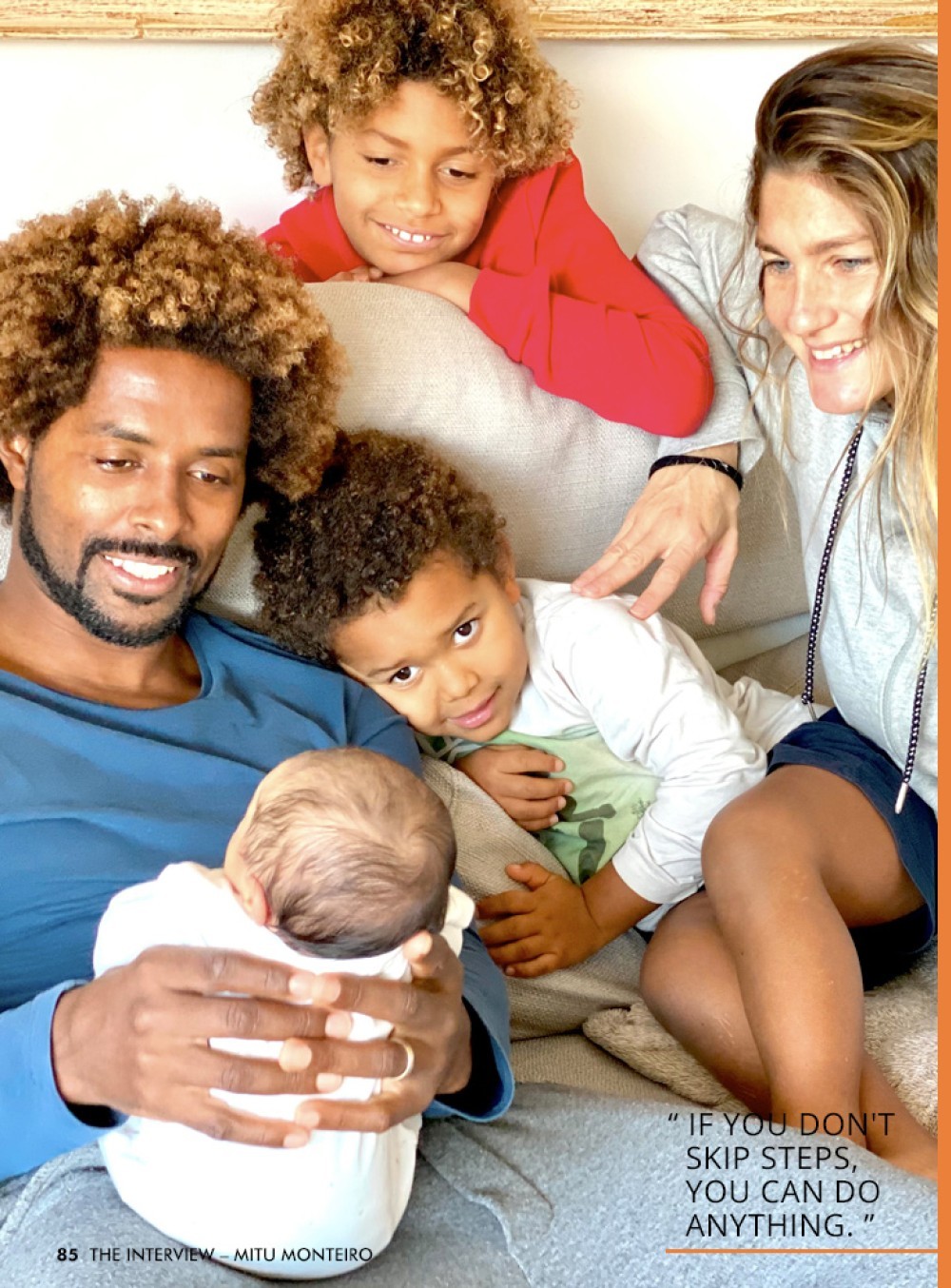
Lees verder op: https://www.iksurfmag.com/articles/issue85/the-interview-mitu-monteiro/










